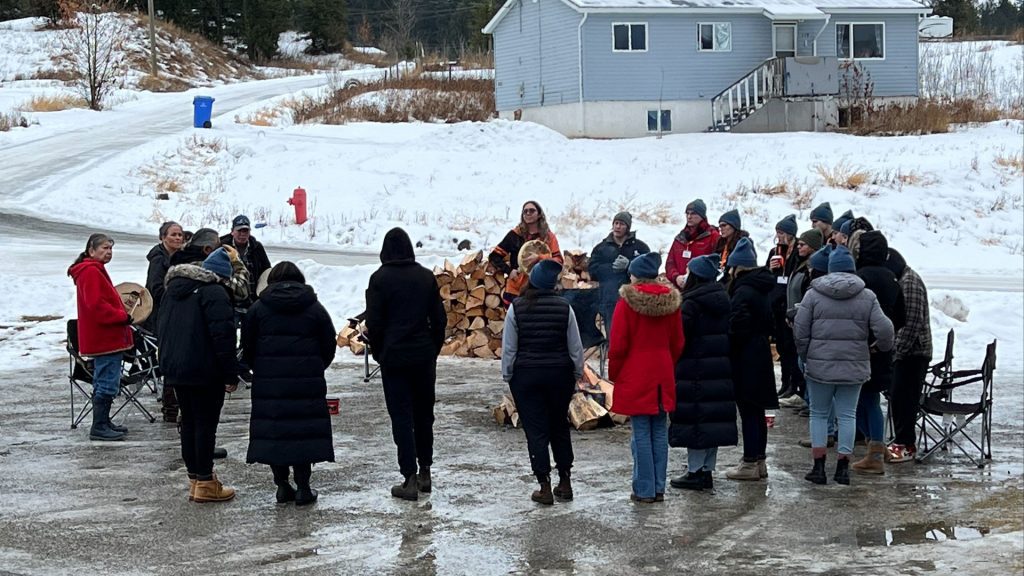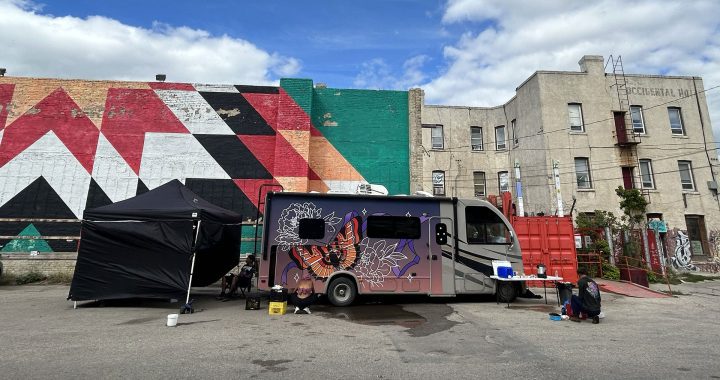
Sacred fire burning for community of Williams Lake First Nation
This story contains disturbing details of residential school abuse
A sacred fire is burning on Williams Lake First Nation in support of those who went to the former residential school.
“The response and resiliency that our community continues to show during these announcements and the investigation is uplifting,” Chief Willie Sellars told APTN News.
On Tuesday, the nation announced that its continued search has revealed that at least 28 children died on the grounds of the former St. Joseph’s Mission site, and identified 66 more potential burial sites for a total of 159 possible grave.
Sellars said he had a chance to drum and sing with the local Little Chief primary schoolchildren as a part of the ceremony.
“They had their rattles and they stood in the circle with us around the sacred fire… hearts are filled by seeing the aspiration to break the cycle and have generations grow up without the trauma of residential school,” said Sellars.
Moving forward on confirmation work
“We are working with the B.C. Coroner’s service and the attorney general to draft an MOU so we can move forward with the confirmation work,” said Whitney Spearing, investigator for Williams Lake First Nation.
Spearing, along with her team, has spent the last year interviewing survivors, gathering documents and surveying approximately 0.18 square kilometres of the grounds of the former St. Joseph’s Mission site.
The probe began after ground-penetrating radar located what may be 215 graves at the former residential school in Kamloops, B.C.
There are ongoing searches at former schools in B.C., Alberta, Saskatchewan, Manitoba and Ontario.
Further work to confirm whether the reflections from ground penetrating radar are graves will include DNA testing and small probes to narrow down the search.
“That will inform where the excavation and exhumation process will happen,” said Spearing.
In addition to archival records and ground surveys, Spearing said interviews with survivors and searches through archives revealed that babies born as a result of child sexual assault at the mission were disposed of by incineration.
“This is something that has been echoed across multiple different institutions across the country,” said Spearing.
According to Spearing, from a forensic perspective, it may be difficult to determine whether there are infant remains, but it is possible to find DNA.
She said the National Centre for Truth and Reconciliation Memorial Register lists 16 children as dying at the facility, but their investigation shows at least 28 based on additional archival records and survivor testimony.
The sites were identified using ground-penetrating radar, along with aerial and terrestrial LiDAR (Light Detection and Ranging) sensors.
Spearing said many of these children were buried at the mission in unmarked graves.
Phase three of the investigation will look at areas of interest around the ranch.
The federal mandate for locating unmarked graves ends in 2025. The government pledged $320 million in 2021 for programs to help Indigenous communities search burial sites at former residential schools and to support survivors and their communities.
“One thing we are definitely trying to flag is that some nations may not have even started their work by then … we would like to see that timeline extended,” said Spearing.
The sacred fire will burn in the community for Williams Lake First Nation until Saturday.
If you need emotional support, the National Indian Residential School Crisis Hotline can be reached at 1-866-925-4419.










